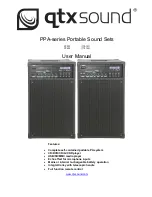
Connection Considerations
NOTICE
If you are connecting to an existing NMEA 2000
®
network, identify the NMEA 2000 power cable. Only one NMEA
2000 power cable is required for the NMEA 2000 network to operate properly.
A NMEA 2000 Power Isolator (010-11580-00) should be used in installations where the existing NMEA 2000
network manufacturer is unknown.
If you are installing a NMEA 2000 power cable, you must connect it to the boat ignition switch or through
another in-line switch. NMEA 2000 devices will drain your battery if the NMEA 2000 power cable is connected to
the battery directly.
The helm control must connect to the same NMEA 2000 network as the other autopilot components for the
autopilot system to function correctly. The NMEA 2000 network provides power to the helm control and allows
for communication with the other autopilot components and from NMEA 2000 devices such as a GPS antenna
or a wind sensor.
This device is powered by the NMEA 2000 network, and a separate power connection is not required.
If you are unfamiliar with NMEA 2000, you should read the “NMEA 2000 Network Fundamentals” chapter of
the Technical Reference for NMEA 2000 Products. To download the reference, go to
You can also connect this device to Garmin
®
Marine Network devices using a 9-pin Garmin Marine Network
cable (sold separately). You must use the included adapter to connect to Garmin network devices that have
a larger connector. This optional connection is not required for the helm control to function with the autopilot
system, but it is recommended for software updates if a Garmin chartplotter is present on the network. This
device cannot be updated using only a NMEA 2000 network connection.
See the installation instructions provided in the corepack of your autopilot system for detailed connection
information specific to the type of autopilot needed for your boat. This connection diagram shows only the
general connection needs of the helm control.
5


























